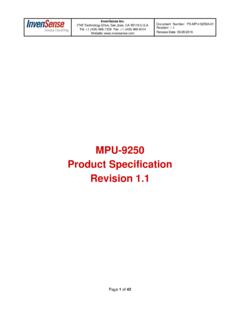Transcription of Accelerometer and Gyroscopes Sensors: Operation, …
1 Keywords: MEMS, Accelerometer , gyroscope Sensors APPLICATION NOTE 5830 Accelerometer AND GYROSCOPESSENSORS: OPERATION, sensing , ANDAPPLICATIONS By: Majid Dadafshar, Senior Member of Technical Staff (Field Application Engineering)Abstract: Microelectromechanical systems (MEMS) in consumer electronics are growing faster each year, with increasing demands from the mobile market, which is dominating the growth for this emerging technology. MEMS sensors are, in fact, becoming the key elements in designing differentiating products for consumer and mobile markets like game consoles, smartphones, and tablets.
2 MEMS give the user a new way to interface with their smart device. This paper is an overview of MEMS: the principle of their operation, the sensing mechanism, and a variety of potential applications . A similar version of this article appeared March 2014 in systems (MEMS) combine mechanical and electrical components into small structures in the micrometer scale. They are formed by a combination of semiconductor and microfabrication technologies using micro machine processing to integrate all the electronics, sensors, and mechanical elements onto a common silicon substrate.
3 Major components in any MEMS system are the mechanical elements, sensing mechanism, and the ASIC or a microcontroller. This article presents an overview of MEMS Accelerometer sensors and Gyroscopes . We discuss the principles of their operation, their sensing mechanism, the growing variety of applications for them, and the profound impact they are already having on our daily as Inertial SensorsMEMS sensors have many applications in measuring either linear acceleration along one or several axis, or angular motion about one or several axis as an input to control a system (Figure 1).
4 Page 1 of 11 Figure 1. Angular versus linear MEMS Accelerometer sensors commonly measure the displacement of a mass with a position-measuring interface circuit. That measurement is then converted into a digital electrical signal through an nalog-to-digital converter (ADC) for digital processing. Gyroscopes , however, measure both the displacement of the resonating mass and its frame because of the Coriolis Accelerometer OperationNewton s Second law of motion says that the acceleration (m/s ) of a body is directly proportional to, and in he same direction as, the net force (Newton) acting on the body, and inversely proportional to its mass(gram).
5 Acceleration = Force (Newton) (m/s ) Mass (gram) (Eq. 1)It is important to note that acceleration creates a force that is captured by the force-detection mechanism of the Accelerometer . So the Accelerometer really measures force, not acceleration; it basically measures acceleration indirectly through a force applied to one of the Accelerometer 's Accelerometer is also an electromechanical device, including holes, cavities, springs, and channels, that is machined using microfabrication technology. accelerometers are fabricated in a multilayer wafer process, measuring acceleration forces by detecting the displacement of the mass relative to fixed Accelerometer 's sensing MechanismA common sensing approach used in accelerometers is capacitance sensing in which acceleration is related to change in the capacitance of a moving mass (Figure 2).
6 This sensing technique is known for its high accuracy, stability, low power dissipation, and simple structure to build. It is not prone to noise and variation with temperature. Bandwidth for a capacitive Accelerometer is only a few hundred Hertz because of their physical geometry (spring) and the air trapped inside the IC that acts as a 2 of 11 Figure 2. Moving mass and capacitance can either be arranged as single-sided or a differential pair. Let s look at accelerometers arranged as a differential pair (Figure 3).
7 It is composed of a single movable mass (one planar surface), that is placed along with a mechanical spring between two, fixed, reference silicon substrates or electrodes (another planar surface). It is obvious that the movement of the mass (Motion x) is relative to the fixed electrodes (d1 and d2), and causes a change in capacitances (C1 and C2). By calculating the difference between C2 and C1 we can derive the displacement of our mass and its 3. Acceleration associated with a single moving displacement of the movable mass (micrometer) is caused by acceleration, and it creates an extremely small change in capacitance for proper detection (Equation 1).
8 This mandates using multiple movable and fixed electrodes, all connected in a parallel configuration. The configuration enables a greater change in capacitance, which can both be detected more accurately, and ultimately makes capacitance sensing a more feasible technique. C = ( A)/D (Farad) = Permitted free space0r0 (Eq. 2)Page 3 of 11A = Area of overlap between electrodesD = Separation between the electrodes r = Relative material permitted between platesFigure 4. Acceleration associated with multiple moving analog mass voltage will go through charge amplification, signal conditioning, demodulation, and lowpass filtering before it gets converted into a digital domain using a sigma-delta ADC.
9 The serial digital bit stream from the ADC is then passed to a FIFO buffer that converts the serial signal into a parallel data stream. That parallel data stream can then be transformed using a serial protocol like I C or SPI before it is sent to the host for further processing (Figure 5).2 Let s summarize quickly. Force causes a displacement of the mass which, in return, causes a capacitance change. Now, placing multiple electrodes in parallel allows a larger capacitance, which will be more easily detected (Figure 4).
10 V1 and V2 are electrical connections to each side of the capacitors and form a voltage-divider with the center point as the voltage of our 4 of 11 Figure 5. Electrical circuit of an sigma-delta ADC is well suited for Accelerometer applications because of its low signal bandwidth and high resolution. With an output value defined by its number of bits, a sigma-delta ADC can be translated into g units for an Accelerometer application very easily. The g is a unit of acceleration equal to the earth s gravity at sea level:For example, if the X-axis reading of our 10-bit ADC is equal to 600 out of the available 1023 (2 - 1 = 1023), and with as the reference, we can derive the voltage for the X-axis specified in g with the following equation: X - voltage = (600 )/1023 = (Eq.)
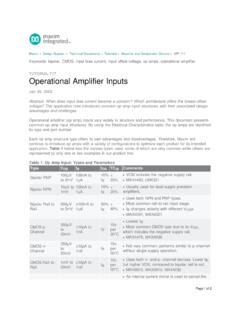
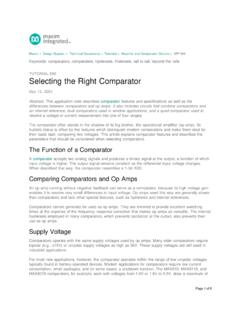





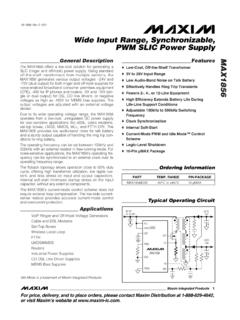
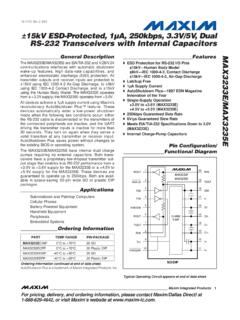


![Robot Sensors and Actuators-new.ppt [兼容模式]](/cache/preview/2/a/3/b/7/3/1/d/thumb-2a3b731d03eb88a82070304738735afa.jpg)
